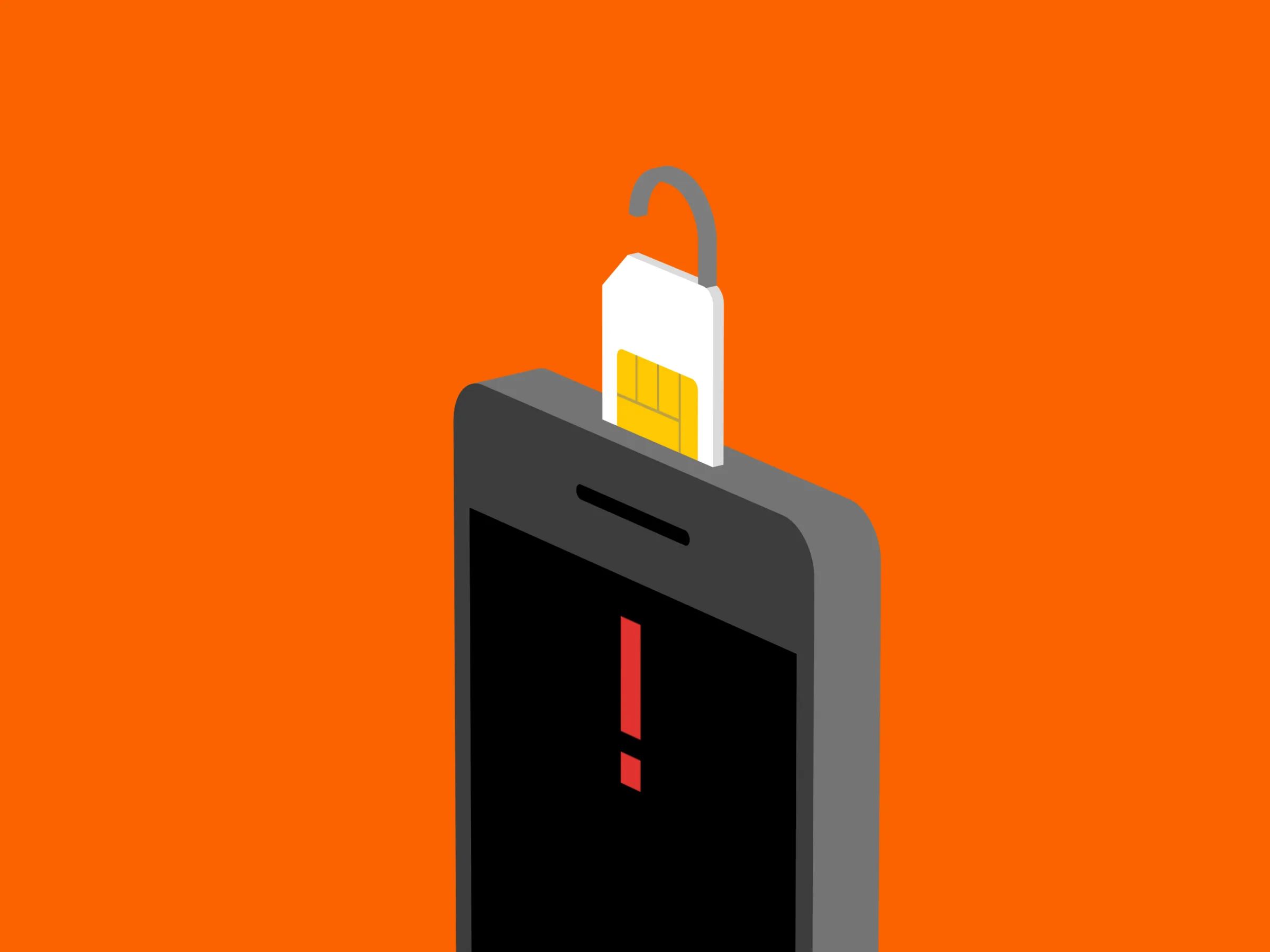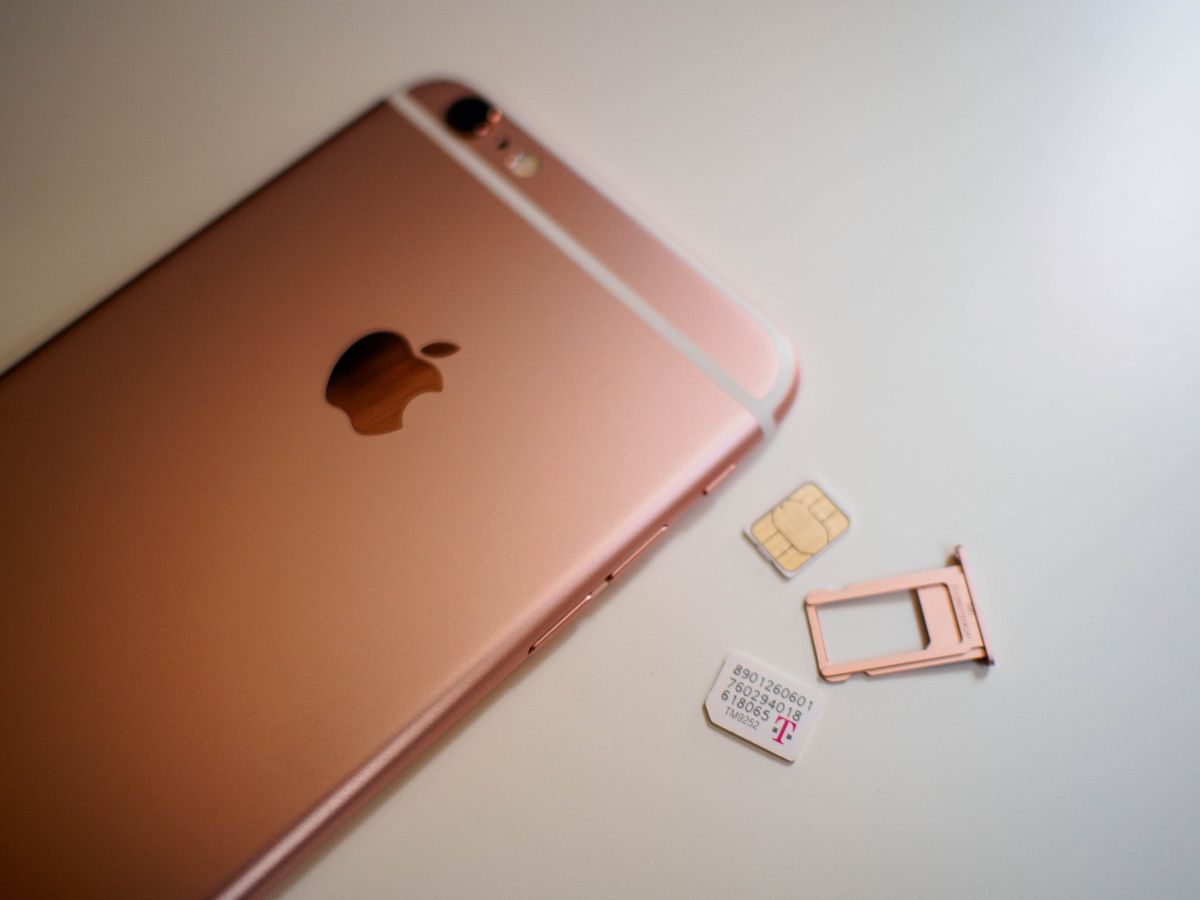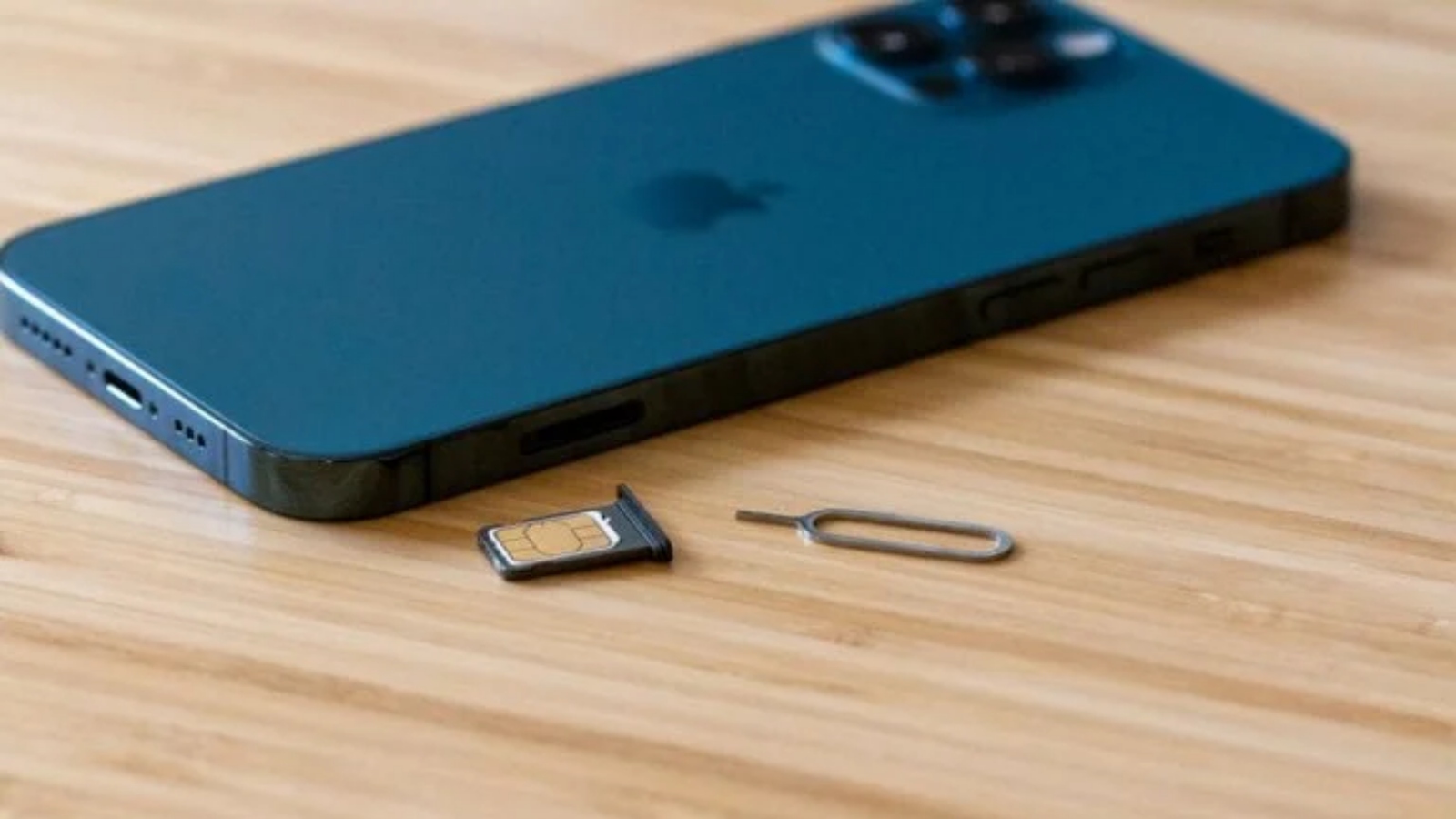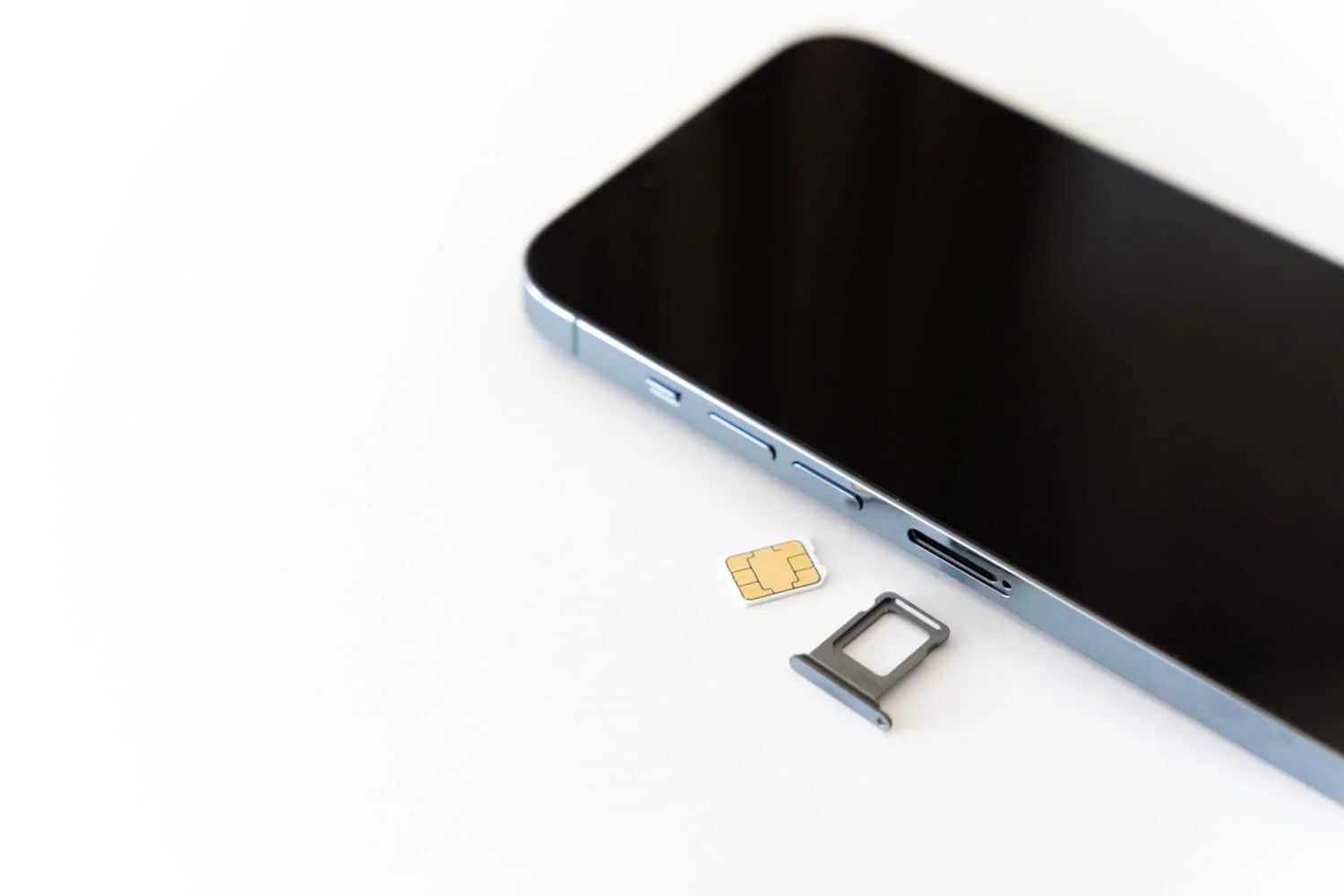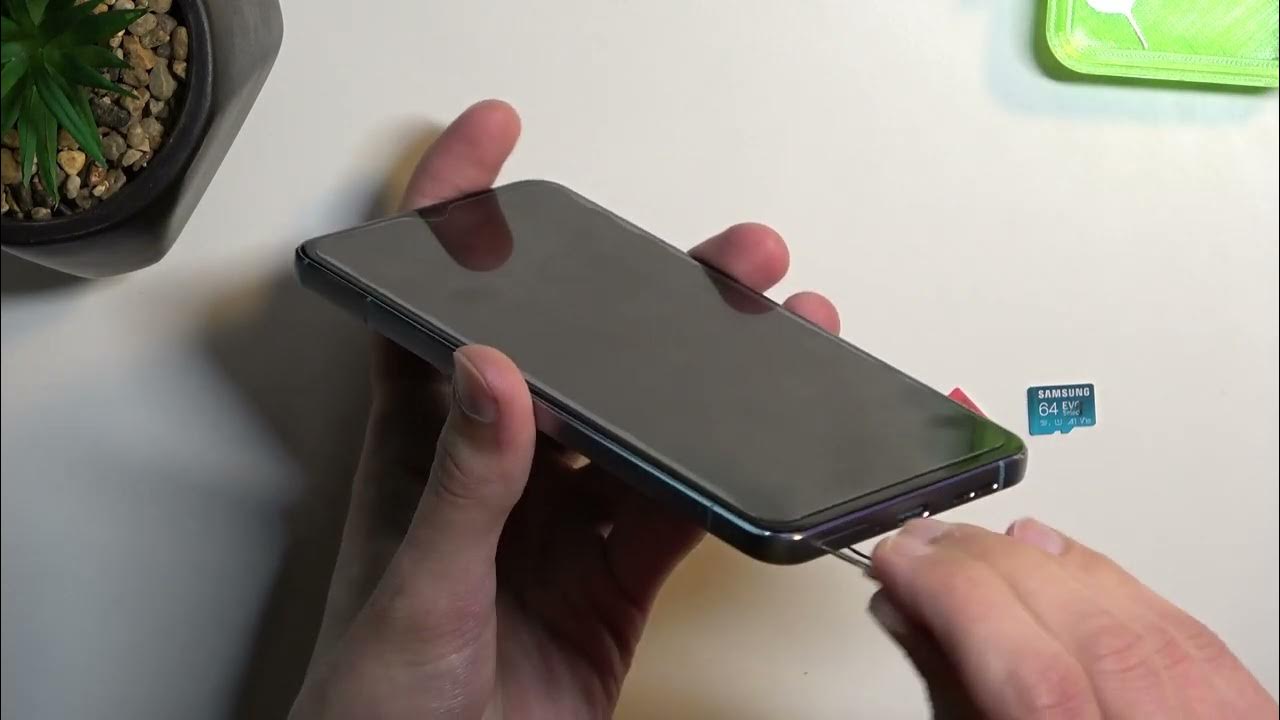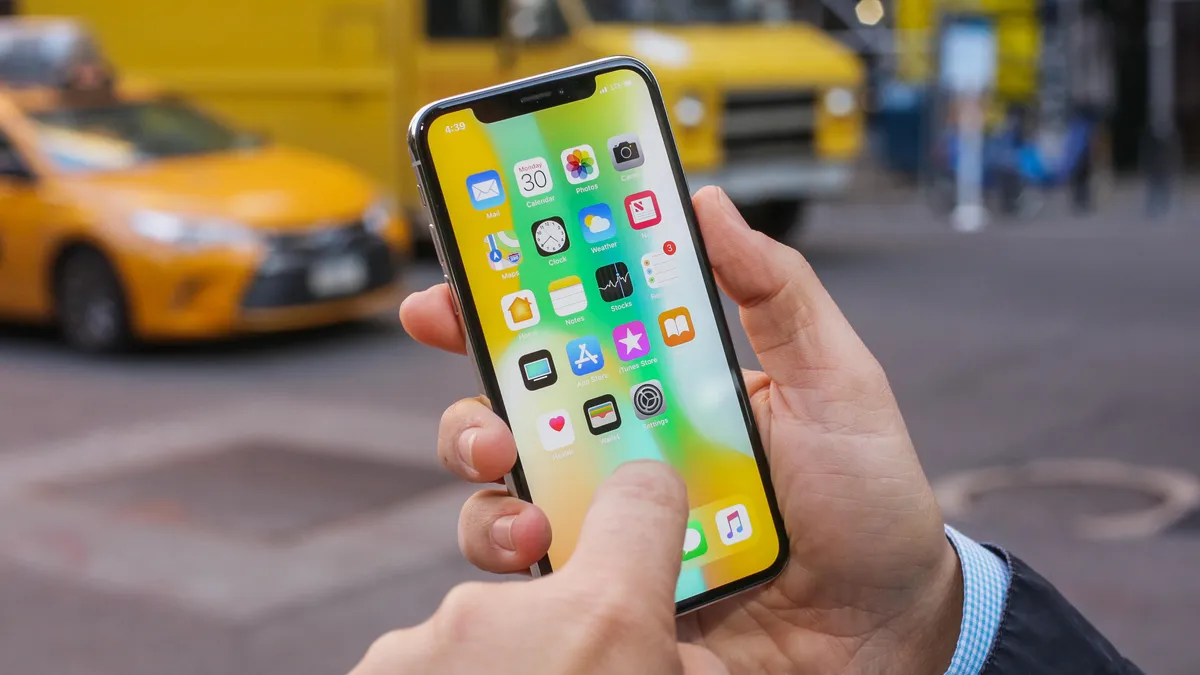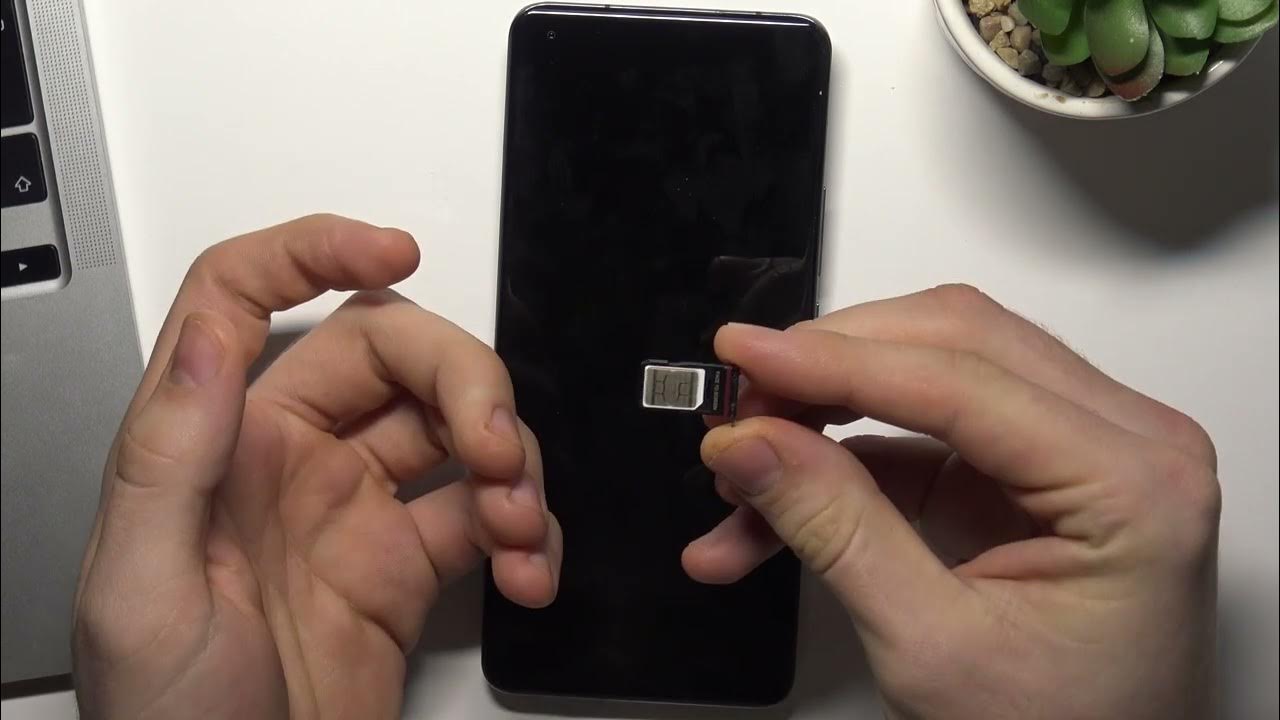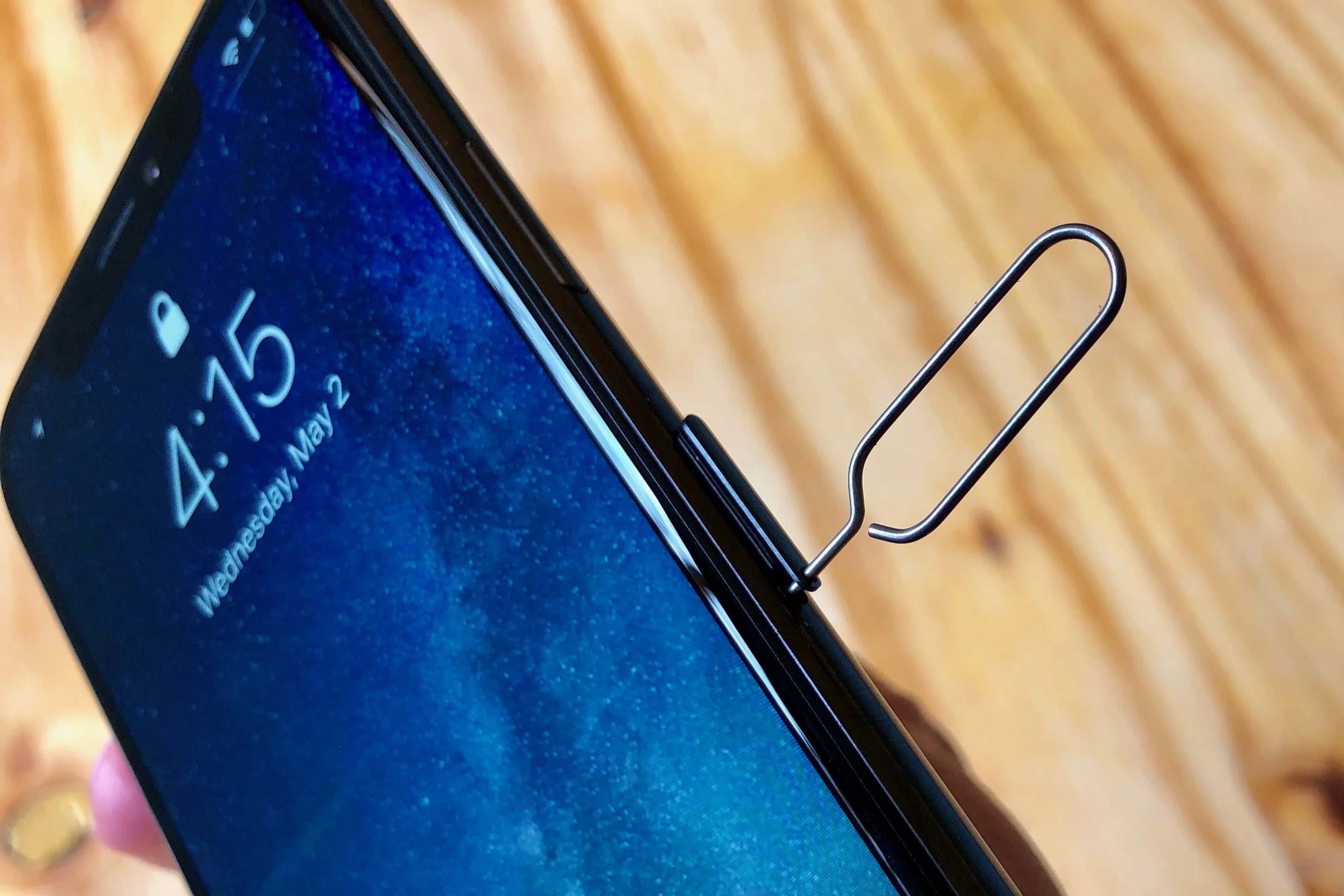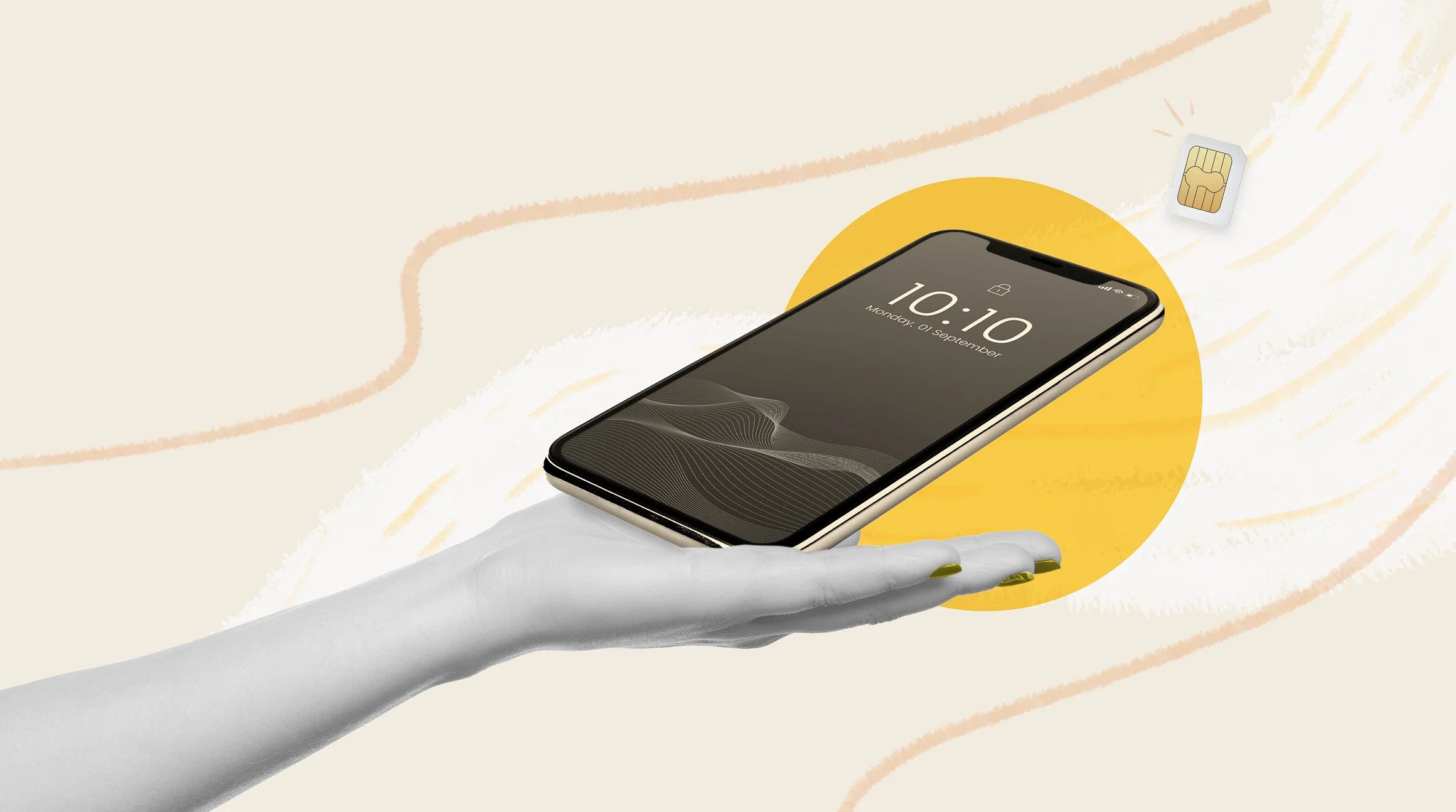Introduction
The SIM card, or Subscriber Identity Module, plays a crucial role in the functionality of mobile devices, including iPhones. It serves as the key to accessing cellular networks, enabling users to make calls, send text messages, and access mobile data. However, there are instances when users may need to remove the SIM card from their iPhones, whether for upgrading to a new device, troubleshooting network issues, or other reasons. Understanding the effects of removing a SIM card from an iPhone is essential for users to make informed decisions and ensure the smooth operation of their devices.
In this comprehensive guide, we will delve into the intricacies of the SIM card's function in an iPhone and explore the potential effects of its removal. Additionally, we will provide insights into the steps for removing a SIM card from an iPhone and shed light on the device's functionality without a SIM card. Moreover, we will address the potential risks associated with removing the SIM card, equipping readers with the knowledge to navigate this aspect of iPhone management effectively.
By gaining a deeper understanding of the implications of removing a SIM card from an iPhone, users can make informed choices and take appropriate measures to maintain the optimal performance of their devices. Let's embark on this insightful journey to unravel the effects and implications of removing a SIM card from an iPhone.
What is a SIM Card and its Function in an iPhone
A SIM card, short for Subscriber Identity Module, is a small, removable card that is essential for the operation of mobile devices, including iPhones. It serves as a unique identifier for the user and the mobile network, enabling the iPhone to connect to the cellular network and access voice, messaging, and data services. The SIM card contains crucial information, such as the user's phone number, network authentication key, and other data necessary for communication with the mobile network.
The primary function of a SIM card in an iPhone is to authenticate the user's identity and grant access to the cellular network. When a user places a SIM card into an iPhone, the device reads the information stored on the card and establishes a connection with the mobile network, allowing the user to make calls, send text messages, and access mobile data services. Essentially, the SIM card acts as a bridge between the iPhone and the cellular network, facilitating seamless communication and data connectivity.
Moreover, the SIM card also stores contact information, text messages, and other data, serving as a portable repository of essential information for the user. This feature enables users to switch devices while retaining their contacts and messages by simply transferring the SIM card to the new device.
In addition to its role in network authentication and data storage, the SIM card also plays a crucial role in international travel. By swapping out the SIM card for one from a local carrier in another country, users can avoid exorbitant roaming charges and seamlessly connect to the local cellular network, ensuring uninterrupted communication while abroad.
Overall, the SIM card is a fundamental component of an iPhone, enabling users to access cellular services, store essential data, and facilitate seamless communication. Its multifaceted functionality underscores its significance in the operation of the iPhone and the overall mobile experience.
In the next section, we will delve into the potential effects of removing the SIM card from an iPhone, shedding light on the implications of this action and its impact on the device's functionality.
Effects of Removing SIM Card from iPhone
Removing the SIM card from an iPhone can have several effects on the device's functionality and user experience. Understanding these effects is crucial for users who may need to remove their SIM cards for various reasons. Below are the key effects of removing a SIM card from an iPhone:
-
Loss of Cellular Network Connectivity: When the SIM card is removed from an iPhone, the device loses its ability to connect to the cellular network. This means that the iPhone will no longer be able to make or receive calls, send or receive text messages, or access mobile data services through the cellular network. Users should be aware that without a SIM card, their iPhone essentially becomes a Wi-Fi-only device, limiting its communication capabilities to internet-based services such as email, messaging apps, and internet browsing.
-
Inability to Make Emergency Calls: One critical impact of removing the SIM card from an iPhone is the inability to make emergency calls. Emergency calls, also known as 911 calls in the United States, rely on the cellular network for connectivity. Without a SIM card, the iPhone cannot establish a connection to the cellular network, potentially impeding the user's ability to make emergency calls in urgent situations.
-
Limited Functionality of Certain Apps: Some apps, particularly those that require cellular connectivity for their core functionality, may experience limited or restricted functionality when the SIM card is removed. For instance, navigation apps that rely on real-time GPS and map data may be hindered without access to the cellular network, affecting their accuracy and usability.
-
Impact on iMessage and FaceTime: iMessage and FaceTime, Apple's proprietary messaging and video calling services, are intricately linked to the user's phone number and Apple ID. When the SIM card is removed, these services may be affected, potentially leading to challenges in sending and receiving messages and making FaceTime calls.
-
Loss of Carrier-Related Features: SIM cards are tied to specific carriers, and their removal may result in the loss of carrier-specific features and services. This includes carrier-specific settings, such as voicemail access and visual voicemail, as well as carrier-specific apps and services that rely on the SIM card for authentication and access.
-
Potential Impact on Device Security: SIM cards play a role in device security, particularly in the context of two-factor authentication and SIM-based security features. Removing the SIM card may impact the security mechanisms associated with the device, potentially affecting the user's overall security posture.
It's important for users to consider these effects when contemplating the removal of the SIM card from their iPhones. While there are valid reasons for removing the SIM card, such as device upgrades and troubleshooting, understanding the implications is essential for making informed decisions. Next, we will explore the process of removing a SIM card from an iPhone, providing users with clear guidance on this procedure.
How to Remove a SIM Card from iPhone
Removing a SIM card from an iPhone is a straightforward process that requires minimal effort and can be accomplished without the need for advanced technical skills. Here are the steps to remove a SIM card from an iPhone:
-
Turn off the iPhone: Before removing the SIM card, it is advisable to power off the iPhone to prevent any potential disruptions or data errors. To turn off the iPhone, press and hold the power button until the "slide to power off" prompt appears on the screen. Swipe the slider to the right to power off the device.
-
Locate the SIM card tray: The SIM card tray is typically located on the side of the iPhone. The specific location may vary depending on the iPhone model. For most recent models, including the iPhone X, XR, XS, 11, 12, and later versions, the SIM card tray is located on the right side of the device. Older models may have the SIM card tray on the top or left side.
-
Eject the SIM card tray: To access the SIM card tray, you will need a SIM eject tool or a small paperclip. Insert the eject tool or unfolded paperclip into the small pinhole next to the SIM card tray. Apply gentle pressure to push the tool into the pinhole until the SIM card tray pops out slightly.
-
Remove the SIM card tray: Once the SIM card tray is partially ejected, carefully pull it out from the iPhone. The tray will come out easily, revealing the SIM card slot and the SIM card within it.
-
Remove the SIM card: With the SIM card tray in hand, gently tip it to release the SIM card. You can then remove the SIM card from the tray by sliding it out or using your fingers to carefully lift it from the slot.
-
Reinsert the SIM card tray: If you have completed the task for which the SIM card was removed and need to reinsert it, carefully place the SIM card back into the tray, ensuring that it aligns with the designated slot. Then, gently slide the SIM card tray back into the iPhone until it is flush with the device's frame.
By following these simple steps, users can safely remove the SIM card from their iPhones without encountering any complications. It is important to handle the SIM card and the iPhone with care to avoid any damage during the removal and reinsertion process.
Next, we will explore the impact on iPhone functions after the SIM card has been removed, shedding light on the device's capabilities in the absence of a SIM card.
What Happens to iPhone Functions after Removing SIM Card
After removing the SIM card from an iPhone, several notable changes occur in the device's functionality. Understanding these changes is crucial for users who may find themselves in situations necessitating the removal of the SIM card. Below, we delve into the specific alterations that take place in the iPhone's functions after the SIM card has been removed.
Loss of Cellular Network Connectivity
The most immediate and significant impact of removing the SIM card is the loss of cellular network connectivity. Without the SIM card, the iPhone cannot establish a connection to the cellular network, rendering it unable to make or receive calls, send or receive text messages, or access mobile data services through the cellular network. As a result, the device essentially operates as a Wi-Fi-only device, limiting its communication capabilities to internet-based services such as email, messaging apps, and internet browsing.
Inability to Make Emergency Calls
Another critical effect is the inability to make emergency calls. Emergency calls, such as 911 calls in the United States, rely on the cellular network for connectivity. Without a SIM card, the iPhone cannot establish a connection to the cellular network, potentially impeding the user's ability to make emergency calls in urgent situations.
Limited Functionality of Certain Apps
Certain apps, particularly those reliant on cellular connectivity for their core functionality, may experience limited or restricted functionality when the SIM card is removed. For example, navigation apps that depend on real-time GPS and map data may be hindered without access to the cellular network, affecting their accuracy and usability.
Impact on iMessage and FaceTime
iMessage and FaceTime, Apple's proprietary messaging and video calling services, are intricately linked to the user's phone number and Apple ID. When the SIM card is removed, these services may be affected, potentially leading to challenges in sending and receiving messages and making FaceTime calls.
Loss of Carrier-Related Features
SIM cards are tied to specific carriers, and their removal may result in the loss of carrier-specific features and services. This includes carrier-specific settings, such as voicemail access and visual voicemail, as well as carrier-specific apps and services that rely on the SIM card for authentication and access.
Potential Impact on Device Security
SIM cards play a role in device security, particularly in the context of two-factor authentication and SIM-based security features. Removing the SIM card may impact the security mechanisms associated with the device, potentially affecting the user's overall security posture.
In summary, removing the SIM card from an iPhone leads to a range of functional changes, particularly in terms of connectivity, app functionality, and security features. Users should consider these implications when deciding to remove the SIM card, ensuring that they are prepared for the resulting alterations in the device's capabilities.
Can an iPhone Function without a SIM Card
The question of whether an iPhone can function without a SIM card is a common concern among users, particularly those who may be considering the removal of their SIM cards for various reasons. The answer is affirmative: an iPhone can indeed function without a SIM card, albeit with certain limitations and alterations to its typical functionality.
When an iPhone operates without a SIM card, it essentially becomes a Wi-Fi-only device. This means that the device can connect to Wi-Fi networks for internet access, allowing users to browse the web, send and receive emails, and utilize internet-based messaging apps. However, the absence of a SIM card results in the loss of cellular network connectivity, rendering the iPhone unable to make or receive calls, send or receive text messages, or access mobile data services through the cellular network.
While the iPhone's core functionalities are impacted by the absence of a SIM card, it is important to note that the device remains fully operational for various tasks that do not rely on cellular connectivity. Users can still take advantage of the iPhone's capabilities for tasks such as web browsing, accessing social media platforms, using productivity apps, and enjoying multimedia content via Wi-Fi connections.
Moreover, the iPhone's Wi-Fi functionality enables users to make use of internet-based communication platforms, such as Voice over Internet Protocol (VoIP) apps, to make calls and send messages over the internet. This provides an alternative means of communication in the absence of cellular network connectivity, albeit with the requirement of a stable Wi-Fi connection.
Additionally, the iPhone's Wi-Fi connectivity ensures that users can continue to receive software updates, app downloads, and other online services that do not depend on cellular data. This allows users to keep their devices up to date and access a wide range of digital content, even without a SIM card present in the device.
In essence, while the absence of a SIM card limits the iPhone's traditional communication capabilities and cellular network access, the device remains functional for a variety of tasks that rely on Wi-Fi connectivity. Users can leverage the iPhone's Wi-Fi features for internet-based communication, app usage, and content consumption, ensuring that the device retains significant utility even without a SIM card.
Understanding the iPhone's ability to function without a SIM card empowers users to make informed decisions regarding the management of their devices, enabling them to navigate the potential implications of SIM card removal effectively.
Potential Risks of Removing SIM Card from iPhone
Removing the SIM card from an iPhone, while often necessary for specific purposes, carries certain potential risks that users should be mindful of. Understanding these risks is crucial for making informed decisions and mitigating any adverse effects that may arise from the removal of the SIM card.
-
Loss of Contact Information: SIM cards serve as a repository for contact information, and in some cases, users may store contacts exclusively on the SIM card. Removing the SIM card without backing up this data can lead to the loss of essential contact details, potentially causing inconvenience and data loss.
-
Disruption of Two-Factor Authentication: Many users rely on SIM cards for two-factor authentication (2FA) to secure their online accounts. Removing the SIM card may disrupt the 2FA process, affecting the security of various online accounts linked to the user's phone number.
-
Inconvenience During Travel: For users who frequently travel internationally, the removal of the SIM card can cause inconvenience, as it eliminates the ability to easily switch to a local carrier's SIM card for cost-effective communication while abroad. This may result in increased roaming charges and communication limitations during travel.
-
Impact on Device Security Features: SIM cards play a role in certain device security features, such as remote locking and tracking in the event of loss or theft. Removing the SIM card may diminish the effectiveness of these security measures, potentially compromising the device's security in adverse situations.
-
Potential Data Loss: In some cases, the SIM card may store text messages and other data. Removing the SIM card without transferring this data to the device or backing it up can result in the loss of important messages and information.
-
Service Disruptions: Depending on the user's carrier and service plan, the removal of the SIM card may lead to service disruptions, such as the loss of access to carrier-specific features, voicemail, and visual voicemail. This can impact the user's overall communication experience and access to essential services.
-
Challenges in Device Troubleshooting: In certain troubleshooting scenarios, particularly those involving network-related issues, the presence of the SIM card may be necessary for diagnostic purposes. Removing the SIM card can hinder the troubleshooting process and complicate efforts to resolve network connectivity problems.
By recognizing these potential risks, users can take proactive measures to mitigate the impact of SIM card removal. This includes backing up essential data, ensuring alternative security measures are in place, and considering the implications for travel and communication needs. Additionally, users should carefully evaluate the necessity of SIM card removal in specific scenarios and weigh the potential risks against the benefits of the action.
Understanding the potential risks associated with removing the SIM card empowers users to make informed decisions and take appropriate measures to safeguard their data, security, and overall mobile experience.
Conclusion
In conclusion, the SIM card is a vital component of an iPhone, serving as the gateway to cellular network connectivity and playing a pivotal role in facilitating communication, data access, and device security. The effects of removing a SIM card from an iPhone are far-reaching, impacting the device's functionality, communication capabilities, and security features. While the removal of a SIM card is a straightforward process, users must be aware of the implications and potential risks associated with this action.
Understanding the effects of removing a SIM card is essential for users to make informed decisions, particularly when considering device upgrades, troubleshooting network issues, or international travel. The loss of cellular network connectivity, potential disruptions to essential services, and impacts on device security underscore the importance of considering the necessity of SIM card removal in specific scenarios.
Moreover, the ability of an iPhone to function without a SIM card, albeit with limitations, provides users with alternative communication options and essential functionality through Wi-Fi connectivity. This knowledge empowers users to navigate the device's capabilities effectively, even in the absence of a SIM card.
As users contemplate the removal of a SIM card from their iPhones, it is crucial to weigh the potential risks, such as data loss, security implications, and service disruptions, against the benefits of the action. Proactive measures, including data backups, alternative security measures, and travel considerations, can mitigate the impact of SIM card removal and ensure a seamless mobile experience.
By gaining a deeper understanding of the effects and implications of removing a SIM card from an iPhone, users can make informed choices and take appropriate measures to maintain the optimal performance of their devices. This comprehensive guide equips users with the knowledge to navigate the complexities of SIM card management, empowering them to make informed decisions and safeguard their data, security, and overall mobile experience.







